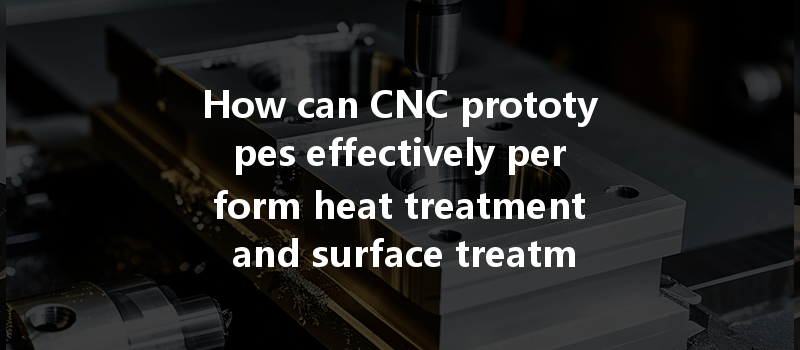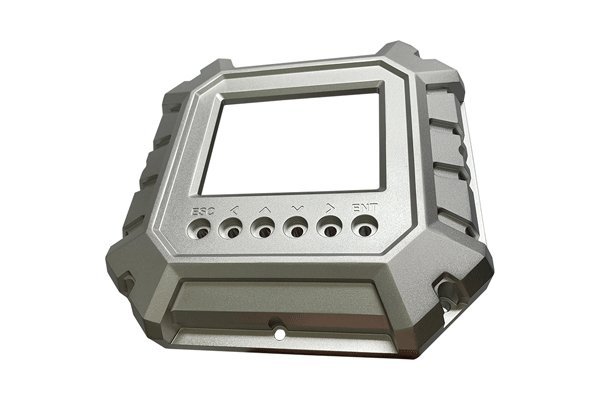Did you know that the global CNC machining market is expected to reach USD 117.93 billion by 2027, growing at a CAGR of around 6.5%? This skyrocketing demand is fueled not only by advancements in manufacturing technologies but also by the increasing need for high-quality parts across various sectors, from aerospace to automotive. At the heart of this evolution is the ability of CNC (Computer Numerical Control) prototypes to not just fabricate precision components but also to enhance them through processes like heat treatment and surface treatment.
As manufacturers strive for optimal performance in their products, heat treatment and surface treatment have emerged as crucial methodologies to improve material properties. In this blog, we’ll delve deeper into the intricate relationship between CNC prototypes and these treatment processes, offering a detailed analysis of how they can be effectively integrated to produce superior results.
Understanding CNC Prototypes
CNC machining is inherently versatile, allowing for real-time adjustment based on digital models. CNC prototypes are initial versions or models that are created for testing concepts and designs before moving to full-scale production. Utilizing CAD (Computer-Aided Design) and CAM (Computer-Aided Manufacturing) software, manufacturers are capable of producing components with outstanding precision.
What are Heat Treatment and Surface Treatment?
Heat Treatment: This includes various processes used to alter the physical and sometimes chemical properties of a material. It involves heating or chilling materials in a controlled way to achieve desired qualities such as increased strength, hardness, ductility, and corrosion resistance. Common types include annealing, quenching, tempering, and normalization.
Surface Treatment: Unlike heat treatment, which modifies bulk properties, surface treatments primarily alter the surface characteristics of a material to enhance durability, aesthetics, and chemical resistance. Techniques such as anodizing, electroplating, and coating are common surface treatment processes.
Importance of Heat Treatment and Surface Treatment in CNC Prototypes
Integrating heat and surface treatments with CNC prototype manufacturing can yield significant benefits:
The Process of Integrating Heat Treatment with CNC Prototyping
The successful integration of heat treatment with CNC machining involves several key stages:
Key Techniques for Effective Heat Treatment in CNC Prototypes
Understanding the different heat treatment methods is crucial. For CNC machined prototypes, consider the following:
Precision is critical in heat treatment. The temperatures involved, along with the duration, must be monitored meticulously to ensure uniformity and effectiveness. Advanced CNC machines equipped with thermal sensors can be invaluable in this respect.

In many cases, post-heat treatment machining may be necessary. This additional process can fine-tune dimensions and surface finish after heat treatment has taken place.
The Processes of Surface Treatment Integration
Similar to heat treatment, surface treatment enhances the characteristics of CNC prototypes in several key steps:
Key Techniques for Effective Surface Treatment in CNC Prototypes
The adage “Preparation is key” rings particularly true for surface treatment. Effective cleaning, whether through chemical methods or sandblasting, removes contaminants and enhances bonding with subsequent materials.
Different treatments work better with specific materials. For instance, anodizing is favored for aluminum, whereas PVD is suitable for a range of materials. It’s crucial to match the surface treatment with the substrate.
Whether employing liquid coating or PVD, controlling the application conditions—temperature, duration, and environment—ensures high-quality results. Attention to detail in application will yield significantly better performance from the surface treatment.
Common Challenges and Solutions
Real-World Application of Heat and Surface Treatments in Industries
Aerospace Industry
In the aerospace sector, parts must withstand extreme conditions. Prototypes for turbine blades or fuselage components often go through rigorous heat treatment and surface treatment to ensure they meet safety and performance standards.
Automotive Sector
Manufacturers use CNC machining coupled with heat treatment to produce components like gears and shafts, ensuring they handle high levels of stress and wear. Surface treatments add further protection, promoting longevity.
Medical Devices
Precision machining combined with coatings used in the medical field enhances the biocompatibility and durability of implants and surgical tools.
Incorporating heat treatment and surface treatment into CNC prototyping significantly enhances material properties, leading to improved performance and longevity of the final products. From selecting the appropriate materials to ensuring quality control at every stage, there is a comprehensive roadmap towards successfully integrating these processes.
As industries continue to evolve and demand for high-quality machined parts grows, understanding the intersection between CNC prototypes and treatment methodologies will become increasingly vital. Manufacturers who master these techniques not only increase their competitive edge but also contribute to advancements in technology and efficiency.
In a world where every detail counts, the integration of heat and surface treatments in CNC machining isn’t merely an option – it’s a necessity for crafting high-performance components that can withstand the challenges of tomorrow.






